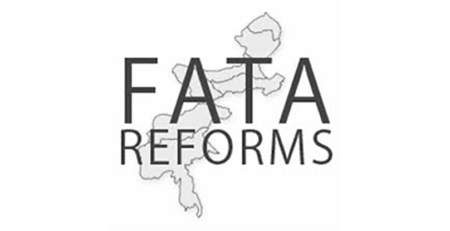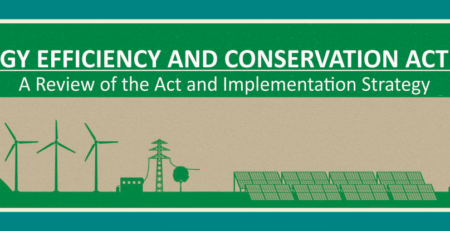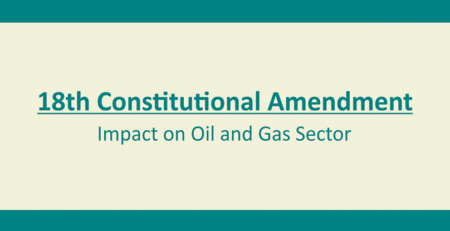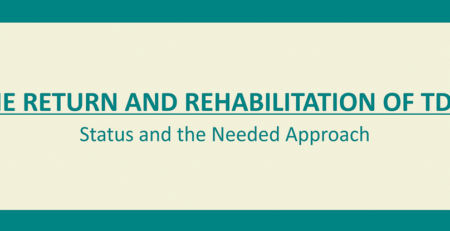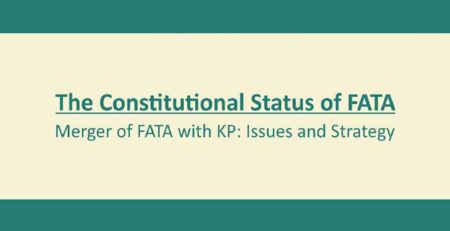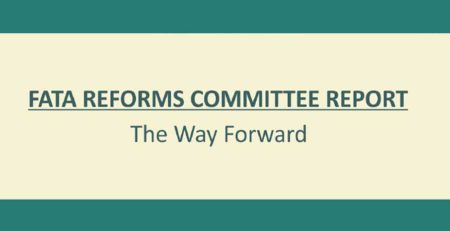The Gilgit-Baltistan Reforms Package 2007: Background, Phases and Analysis
A thorough analysis of the reforms package announced by PML-Q led government in August 2007 for Northern Areas of Pakistan.
Ershad Mahmud
Policy Perspectives , Vlm. 5, No. 1
Introduction
On August 23, 2007, President Musharraf dashed to Gilgit and declared the promulgation of an amended version of the existing Legal Framework Order (LFO) to fulfill a longstanding demand of the local people. As per the new amendments in the order, the powers of the federal Ministry of Kashmir Affairs and Northern Areas have been curtailed and vested in the elected government. The Deputy Chief Executive has been promoted to the position of Chief Executive, while the Minister of Kashmir Affairs and Northern Areas who is appointed by the federal government, will now perform as the Chairman of the NA government. Furthermore, the legislative council has been upgraded to the status of an assembly entitled to pass budget as well. However, the package is silent about the reforms it necessitates in the legal system.
The present paper attempts to examine various aspects of the recently announced reforms package in the context of political aspirations and constitutional demands. It discusses past reforms packages to identify their loopholes and assess the difference the current packages may be expected to make. It also takes into account the strategic importance of the areas, both from domestic and foreign perspectives, alongside the issues arising out of sectarianism and the prevailing law and order situation.
The area affected by the reforms has a historical nexus with the Kashmir imbroglio and the Indian government and civil society are therefore keeping a keen eye on developments here. Hence, the paper also throws light on Delhi’s stance on these areas and refers to President Musharraf’s formula, which acknowledges the Northern Areas as an integral part of the Kashmir conflict and thus, by default, part of negotiations with India on the issue.
In recent years, gradual economic growth and social changes have offered relatively wider educational opportunities and a perceptible economic upsurge in the Northern Areas and Azad Jammu and Kashmir. In the years ahead, the region will be a natural beneficiary of Pak-China mega developmental projects and huge trading activities, which will have a strong bearing on the local politics. The paper touches this aspect too, and finally highlights key points for the policy-makers’ consideration.
Because of inadequate published material on Gilgit-Baltistan, a large portion of the paper is based on interviews and personal observations of the author.
Political and Constitutional Background*
According to the Constitution of Pakistan, the Northern Areas are neither part of Pakistan nor of Azad Jammu and Kashmir (AJK). In 1949, the Government of AJK handed over the administrative control of these areas to Pakistan on an interim basis that has gradually assumed permanence. Unfortunately, however, the federal government has not been able to raise the status of these areas to that of other provinces by providing basic human rights and a representative system in the first place. For a long time, the people of these areas have been peacefully demanding their political and constitutional rights. The struggle has become more pronounced in the last few years with a sharp increase in the number of disgruntled elements with the prevailing system.
Almost six decades ago, the Northern Areas obtained independence from the Maharaja Hari Singh dynasty, which ruled Jammu and Kashmir. However, they were not merged with Pakistan because of their historical link with Kashmir. Although the inhabitants of these areas expressed their wish to accede to Pakistan, the latter declined the offer, underlining their integral link with the state of Jammu and Kashmir. Notably, a segment of the concerned authorities in the government pleaded to strike a separate accord with the Gilgit Agency. This group argued that the Maharaja had handed over the control of these areas to Britain on lease, and since Pakistan was the legal hair of the British Raj, it automatically obtained jurisdiction over these areas. In the end, however, the Government of Pakistan decided to maintain the link between the future of these areas with that of the rest of Kashmir.
Apart from this principal position, there were two other main reasons why the control of these areas was wrested to Pakistan: firstly, at the time of its liberation from the Maharaja Government, Gilgit-Baltistan was almost totally inaccessible from Azad Kashmir, particularly through Muzaffarabad, the nascent capital of AJK; secondly, the leadership of both Pakistan and Azad Kashmir was certain that the people of these areas would accede to Pakistan in the proposed referendum to determine the future status of the state of Kashmir. Therefore, practically, it was irrelevant to them whether these areas were under the control of Pakistan or Azad Kashmir.
It was around this time that establishment of a proper political setup started to take shape on both the Indian Occupied and the liberated side of Kashmir. Notwithstanding the disputed nature of the legal and constitutional status, a proper political setup was established in the Indian Occupied part of Kashmir in the wake of the first state elections in 1951. Meanwhile, in AJK, rules of business were devised in 1952 and the first elections were held under the basic democracy system in 1961, bringing Mr. K. H. Khurshid into power as the first president of the state. The interim constitution of Azad Kashmir was put in place in 1970 while the parliamentary system was established in 1974.
On the other hand, the political and administrative affairs of the Northern Areas were managed under the Frontier Crime Regulations (FCR); no democratic setup was established in these areas with the consent and will of the local populace and, consequently, not only political but judicial powers remained in the hands of the Ministry of Kashmir Affairs and Northern Areas (KANA). Thus, the local people were deprived of the rights and privileges enjoyed by citizens of Pakistan and AJK.
A primary reason for this state of affairs was the remoteness of the Northern Areas. This was compounded by the center’s own profound deficiency in democratic norms and principles: since the army, in collaboration with the civilian bureaucracy, was practically ruling the country, it is not surprising that the federal government did not prioritize the establishment of democratic institutions in the Northern Areas.
Public pressure was also lacking in this respect. Owing to lack of political awareness and absence of a vibrant civil society, dedicated full-time political leadership was a rare commodity in the Northern Areas. Quite often, young educated persons from the area opt for government jobs or preferred to get settled in Pakistan’s cities for better and more secure employment. This trend sucked out most of the potential indigenous leadership and left the area at the mercy of traditional sectarian groups.
Nor did other sources of pressure come to the aid of the Northern Areas. Pakistan’s political parties paid no attention to the plight of the local people because they had, literally, no say in national affairs and no representation in the parliament. For more or less similar reasons, the media ignored them too.
With the opening of the Korakorum Highway for trade and tourism in 1984, both the strategic and the political importance of the Northern Areas shot up on the domestic front. Besides interlinking the local people with the rest of Pakistan, the highway flung open for them the gates of business and trade with Xinjiang, the western province of China. Trade links with China gave rise to the emergence of stronger political and ideological moorings. Thus, apart from socio-economic development, the highway increased political awareness among the people.
Previously, the people of Gilgit had had no access to other parts of the county in the winters. The relatively well-off people migrated to Karachi for a better life. The migration trend surged further with the opening of the Korakorum Highway and, as a result, a large number of children of poor and middle class families left, for Karachi in particular, for education. Meanwhile, the Aga Khan Foundation Network established a number of educational institutions in Gilgit-Baltistan and provided financial support to the local people to start small businesses. The Foundation also offered admissions and jobs to students from the Northern Areas at its medical university and hospital in Karachi. As a result, students constitute 40 percent of the approximately one hundred thousand people from the Northern Areas living in Karachi. A good number of these students have played important roles in the socio-political and economic development of their respective areas back home.
Better communication facilities also prompted political parties of Pakistan and AJK to set up their branches in these areas. Notwithstanding the sectarian divide that has prevailed in the area for a long time, political parties have played a laudable role in enhancing political awareness and organizing a movement for democratic rights among the local people.
The watershed in the recent history of the Northern Areas, however, was the filing of a petition with the Supreme Court by the President of Al-Jihad Trust Rawalpindi, Habibul Khairi Advocate, pleading that the legal status of this region be determined so that the local people could enjoy the same basic human and political rights that are enjoyed by the rest of the populace in the country.
Legal and Political Struggle
The apex court in its verdict to the petition directed the government to ensure the provision of equal rights to the people of the Northern Areas without any prejudice to the historical status and territorial integrity of the areas with the rest of the Jammu and Kashmir state. In its 42-page judgment, delivered on the May 28, 1999, the Supreme Court said:
…Since the geographical location of the Northern Areas is very sensitive because it is bordering India, China, Tibet and USSR, and as the above areas in the past have also been treated differently, this Court cannot decide what type of Government should be provided to ensure the compliance with the above mandate of the Constitution. Nor we can direct that the people of Northern Areas should be given representation in the Parliament as, at this stage it may not be in the larger interest of the country because of the fact that a plebiscite under the auspices of the United Nations is to be held. The above questions are to be decided by the Parliament and the Executive. This Court at the most can direct that the proper administrative and legislative steps should be taken to ensure that the people of Northern Areas enjoy their above rights under the Constitution.
…As regards the right to access to justice through an independent judiciary, it may be observed that the Northern Areas has a Chief Court, which can be equated with a High Court provided it is manned by the persons or the statute who are fit to be elevated as Judges to any High Court in Pakistan. Its jurisdiction is to be enlarged as to include jurisdiction to entertain Constitutional Petitions inter alia to enforce the Fundamental Rights enshrined in the Constitution…
…To initiate appropriate administrative/legislative measures within a period of six months from today to make necessary amendments in the Constitution/ relevant statute/statutes/ order/orders/rules/notification/notifications, to ensure that the people of Northern Areas enjoy their above fundamental rights, namely, to be governed through their chosen representatives and to have access to justice through an independent judiciary inter alia for enforcement of their Fundamental Rights guaranteed under the Constitution.
The court gave the government six months to ensure the establishment of an elected administration and independent judiciary and provision of all basic rights enshrined in the Constitution of Pakistan. Following the decision, the government took several steps to devolve power to the local level. During this period, the point was raised in policy circles in Islamabad that the federation was helpless to comply with the verdict of the apex court because of the sharp political and sectarian divide in the Northern Areas, and the historical connection of these areas with the state of Kashmir, which posed a hindrance to determining their real status.
This argument cannot simply be brushed aside. The Northern Areas are unique in all of Pakistan because of their ethnic, sectarian and linguistic diversity. Although no scientific data is available about the demographic profile of different sects in different areas, it cannot be denied that Shi’as are in majority and would most likely establish a government if a representative system were to be introduced. This perhaps is why Shi’a leaders and adherents in particular demanded for a long time that the Northern Areas be declared a fifth province of Pakistan. On the other hand, Sunnis maintained that these areas must remain part of the state of Kashmir in view of their historical status; they knew that this stance alone could deny the Shi’as majority rule over the Northern Areas. For a long time, the religious and political leadership of the areas remained divided on these issues, providing a handy excuse to the establishment to overlook the demands of the local people.
However, over a period of time, even the hard-line Shi’a and Sunni leaders came to realize, along with the local civil society, that local people were the prime victims of their internal divides. They also came to terms with the reality that declaring the Northern Areas as a fifth province of Pakistan was not feasible for Islamabad because of its international commitments and special relationship with the people of Kashmir. The only viable course was to find a new solution guaranteeing the provision of the basic human and political rights to the people without prejudicing the traditional stance of Pakistan on the Kashmir issue.
In this backdrop, the religio-political and non-governmental organizations unanimously agreed upon establishing the Gilgit-Baltistan National Alliance (GBNA) comprising of the Pakistan People’s Party, Jamiat Ulema-e-Islam, Jamaat-e-Islami and Liberation Front. To maintain a fine balance, the Sunni politician Inayatullah Shamali was appointed as the Alliance’s president while the Shi’a leader Qurban Ali was made its secretary general. Following discussions, the Alliance agreed upon a consensus formula that, according to Mr. Shamali, kept in view the compulsions of Pakistan on the Kashmir problem: GBNA demanded a governmental setup on the pattern of AJK, i.e. internal autonomy without prejudicing the Kashmir cause.
This formula is supported by different segments of society and there is mounting pressure on Islamabad to accept it. It has virtually paved the way for Islamabad to fulfill the demand for internal autonomy without making any compromise on its traditional stance on Kashmir. In the following discussion, the steps taken by the federal government are analyzed in the context of the Supreme Court verdict and the aspirations of the masses.
Significant Developments, 1999-2006
In the light of the apex court decision and political pressure, three amendments were introduced in the Legal Framework Order 1984. This was intended to be a step towards establishment of a democratic system based on adult franchise and an independent judiciary. The system introduced in the wake of these amendments was similar to the provincial administrative setup. The status of the Northern Areas Council was elevated to that of a Legislative Council. Initially, the number of total seats of the Council was fixed at 29. This was increased to 36 in the 2004 elections. Six seats were reserved for women and technocrats, respectively.
The Legislative Council was entitled to legislate on 49 issues and elect its Speaker and Deputy Speaker. Six Advisors were appointed to head as many departments. These Advisors were given privileges and protocol equivalent to provincial ministers.
For the dispensation of justice, a judicial reforms package was also introduced under which a three-member Chief Court and Northern Areas Court of Appeal were established.
The sessions of the Legislative Council were held regularly and different issues were debated with both treasury and opposition members presenting their viewpoints. The Council not only developed legislation on various issues but also passed unanimous resolutions for more powers from time to time.
However, the new system had many loopholes in the presence of which neither a truly representative political system nor a truly independent judicial system could be put in place. The powers enjoyed by the Legislative Council and the Deputy Chief Executive were largely ceremonial, with real powers remaining with Islamabad. It was believed that the secretaries of different departments were more powerful than the concerned advisors. Therefore, no significant change was observed in the lives of the local people.
Contrary to democratic principals, according to the Legal Framework Order 1999, the Legislative Council was not entitled to elect its own head, the Chief Executive. Instead, the Chief Executive was the Federal Minister for Kashmir Affairs and Northern Areas, who was not answerable to the Council and therefore above reproach from it. He was empowered to amend the Legal Framework Order at his will without seeking the approval of the Council. The Deputy Chief Executive, a locally elected representative, could run the system with the limited powers at his disposal. Even here, the nomination of the Deputy Chief Executive was subservient to the will of the Chief Executive. Furthermore, it was within the power of the Chief Executive to amend or even abrogate any of the orders of the Deputy Chief Executive.
Although the Legislative Council was empowered to elect the Deputy Chief Executive, it was denied the right to table a no-confidence motion against him. All legislation made by the Council was meaningless until it was formally approved by the Chief Executive. The annual budget was to be read out before the Council, which was not entitled to amend it in any way.
So powerless were local representatives that the six Advisors who were appointed to head the departments of government were literally allowed only an advisory role, while real powers remained with the department’s secretary. The secretaries were not answerable to the Legislative Council and therefore not required to answer any questions raised to them in the Council. In other words, even the bureaucracy was above any reproach or accountability. No other legal recourse was available to the members of the Council or common citizens to question the decisions and practices of local government officials.
The 2007 Reforms Package
Keeping in view the growing resentment over the above mentioned state of affairs, President Musharraf, in his visit to Gilgit on October 23, 2007, announced a package to amend the Legal Framework Order 1999. According to this package, the Legislative Council was upgraded and made a Legislative Assembly, and the Deputy Chief Executive was made its Chief Executive. The Minister for Kashmir Affairs was made the Chairman of the Legislative Assembly. This time, the members of the assembly were empowered to table a no-confidence motion against the Chief Executive, Speaker and Deputy Speaker. Moreover, the assembly was given the prerogative to pass the annual budget for the Northern Areas.
It is important to note that while the package lifted the status of the Northern Areas to a level close to that of AJK, it did so without prejudicing the Kashmir issue. Therefore, for the first time, the entire Kashmiri leadership, including the All Parties Hurriyat Conference (APHC), welcomed the package. Previously, the leadership of AJK and Indian Occupied Kashmir people had resisted reforms, giving the people of the Northern Areas reason to complain that Kashmiri leaders were in the habit of producing different arguments to quash any step the federal government might take to enhance their political and administrative status. With the dialogue process under way between India and Pakistan on Kashmir, it was, in fact, essential to accord all the rights to the Northern Areas that were being enjoyed by AJK.
However, there are weaknesses in the 2007 Reforms Package too. One of the most glaring problems is that it vests sweeping powers in the Minister for Kashmir Affairs and Northern Areas, who is also the ex-officio Chairman of the Legislative Assembly. For instance, he is neither answerable to the Assembly nor can he be impeached by it. A no-confidence motion cannot be tabled against him, whereas he can veto any legislation passed by the Assembly. His approval is essential to make any legislation effective. The powers of the Chairman cannot be challenged at any forum. It may safely be concluded that, by vesting so many powers in the Chairman, the federal government has, practically speaking, delivered a package that is more ceremonial and less substantive.
Even worse, the package maintains complete silence upon the issue of judicial reforms, which are sorely needed, as explained in the next subsection. Consequently, the package has been widely criticized by the public despite its many good points. The common perception is that powers have simply been transferred from one authority to another.
Loopholes in the Judicial Reforms
The 2007 reforms package is completely silent about judicial reforms. Thanks to a long-drawn political struggle and the decision of the 1999 Supreme Court, a three-member Chief Court enjoying High Court status was established to review lower courts’ decisions in the Northern Areas. A three-member Appellate Court was also established to entertain appeals against Chief Court decisions. However, unlike High Court judges, judges of the Chief and Appellate Courts have no job security. This and several other lacunae remain in matters related to the appointment, transfer and promotion of judges that place the entire judicial system under a cloud. In effect, the judiciary has been made subservient to the executive, which enjoys exclusive powers to appoint judges of all courts and requires only the consent of the Federal Minister to back its decisions. Unlike other parts of the country where this right is exercised by a Judicial Council, in the Northern Areas, it is the bureaucracy that writes the Annual Confidential Reports (ACR) of the judges. Moreover, the Chief Secretary has the power to transfer the Chairman of the Chief Court or any other institution’s employee to any other department or corporation. Such unbridled powers of the bureaucracy are serious obstacles in the growth of a credible political and judicial system in the Northern Areas.
The system promulgated in the Northern Areas has no constitutional protection as all the affairs are run in accordance with the Legal Framework Order and rules of business. As a result, institutions providing justice to the people suffer the most in the first place and it should, therefore, come as no surprise that the legal system prevalent in the Northern Areas does not guarantee the protection of the basic human rights. Entertaining petitions against the executive are out of the purview of the judiciary: thus, even when the government takes an extra-constitutional step or acts in violation of the rules of the land, it cannot be challenged in the courts. The Legal Framework Order is simply out of the jurisdiction of the judiciary. Even the Supreme Court of Pakistan cannot entertain any case regarding the Northern Areas as they are out of its jurisdiction.
Because of the strategic location and importance, the presence of military, paramilitary and intelligence organizations in the Northern Areas is not surprising. Sometimes, these institutions pick up local people alleging that they are involved in suspicious activities and detain them in habeas corpus. No one can challenge such acts because the Chief Court and Appellate Court do not have jurisdiction to entertain habeas corpus cases.
Nature of the Reaction
Because of the policies of the federation and non-acceptance of the demands of the people, public rage is growing alarmingly in the Northern Areas. This is an encouraging sign for the forces that are against the integration of these areas in Pakistan. Not long ago, there was not even a single mentionable voice against Islamabad in the region; today, even mainstream parties bluntly criticize Pakistan for its policies.
Thanks to unkind treatment in the past and political and economic backwardness, many political and social elements have emerged on the scene who either advocate a province status for Northern Areas or even dream of an independent state in the region. Some of the stalwarts of these groups are quite active at home and also participate in off-shore seminars and conferences and, besides criticizing the policies of Islamabad, play in the hands of forces determined to tarnish the image of Pakistan the world over. Regardless of their popularity among the masses, these groups are taking the fullest advantage of the public’s resentment and projecting the idea of an independent state. The most prominent among such antagonist groups are the Gilgit-Baltistan United Movement (GBUM), Baltistan National Movement (BNM), Baltistan Students Federation (BSF), Karakurum National Movement (KNM) and Gilgit-Baltistan National Front (GBNF).
Parallel to anti-federation elements, national political parties such as the Pakistan People’s Party, Pakistan Muslim League (Quaid-e-Azam faction [Q] and Nawaz faction [N]), Jamiat Ulema-e-Islam and Jamaat-e-Islami have their support bases in the Northern Areas. A broad consensus exists among these parties on the problems faced by the people and they play their role in inviting the attention of the concerned authorities in Islamabad to them. However, bitterness is fast getting the better of these parties as the center remains, by and large, unmoved in this regard.
Because of the absence of political and democratic institutions, political parties have neither developed themselves strongly on an ideological basis nor has popular leadership emerged on the scene. The administration has meticulously employed the trick of divide and rule to meet the obtaining requirements. It deepened the sectarian divide in the region, leading to the emergence of violent groups in the area. This was a new phenomenon as the followers of different sects, such as Shi’as, Sunnis and Ismailis, had lived together for ages with normal social interaction. Eidul Fitr of 1988 marked the first time that clashes on minor differences erupted between Shi’as and Sunni. This was also the first occasion when any outside force, in this case a group of Sunnis of Kohistan, joined a local conflict. The result was a huge loss of lives and property. Instead of bringing the responsible parties to justice, the government brushed the issue under the carpet, thereby creating a situation of festering rivalry between the two sects. As a result, sectarian clashes on minor issues became commonplace in Gilgit and adjacent areas.
There is no proper mechanism to provide justice to the families of the persons who have lost their lives in this strife, and who mostly belonged to the lower socio-economic strata. No system is in place to cater to the financial needs of their families. It is also believed that law breakers are deliberately not brought to book owing to Islamabad’s fears that India might exploit this situation.
Law enforcement institutions are confused as, at times, they are controlled directly from Islamabad by the Minister of Kashmir Affairs and Northern Areas. After the Kargil war, the Northern Areas Force Command (NAFC) was upgraded to a corps that has now also started to interfere in the administrative matters of the areas. Furthermore, monitoring teams of the army have been given a role in administrative affairs: an officer is appointed in each district to keep an eye on the administration. Hence, the local administration is answerable to three authorities and institutions simultaneously, which has, not surprisingly, created a mess of affairs.
Foreign Interest in the Region
The absence of a true representative system and denial of basic human rights certainly has repercussions for a country’s national security. The situation becomes even more dangerous if the area is strategically located and is inhabited by people of diverse backgrounds. It should not be overlooked that the Northern Areas are home to the internationally powerful and highly influential community of Ismailis, and if law and order are not fully restored, international powers may intervene any time in this region with the stated aim of protecting this community. The added temptation for such powers in the Northern Areas is the opportunity to checkmate China, which lies in congruity with this region.
Similarly, the security and political clout of Shi’as in Pakistan have a close link with the latter’s relations with neighboring Iran. Shi’as the world over have strong emotional ties with post-1979 revolutionized Iran. Iran is very deeply concerned about the security of Shi’as in Pakistan and it is an open secret that many Shi’a organizations and madaris in the past obtained financial support from Tehran. Therefore, ensuring the security of Shi’as is important for the government from the standpoint of its relations with Iran as well.
As mentioned earlier, notwithstanding the predominant aspirations of the local people, the future of the Northern Areas cannot be extricated from the rest of the Kashmir dispute. This is why when President Musharraf gave his formula of dividing Kashmir into seven zones on October 25, 2004, one zone represented the Northern Areas. This was music to the ears of the nationalists who thoroughly eulogized the plan. However, in a meeting with these forces, President Musharraf made it clear to them, addressing nationalist leader Amanullah Khan directly, that it would be a foolhardy to expect from any Pakistani leader, especially a military one, to abdicate from the Northern Areas.
On the other hand, the Indian government and institutions are according special importance to these areas. This is also because these areas were part of the Kashmir state until 1947, and India lays claim over the entire state of Kashmir. Moreover, since India and Pakistan are currently discussing different formulae to grant self-governance to both parts of Kashmir, Delhi would consider it a big achievement if it succeeds in obtaining this right for Northern Areas as well. Indians are well aware of the significance of these areas for Pakistan and do not miss any opportunity to castigate Islamabad for the denial of basic human and political rights to the people of these areas.
Many in the policy circles of Delhi believe that the people of Northern Areas are so disenchanted with Islamabad that if they were provided logistical support and bases, they could take up arms for liberation. It is also assumed that Shi’as and Ismailis are disgruntled with Pakistan, and that the former, in particular, are apprehensive about a conspiracy to turn them into a minority by bringing immigrants in the region. In this backdrop, the Indian Express of January 23, 2006 advised the Indian government to focus on Gilgit-Baltistan for alternate energy routes. The headline of the paper was: “India needs to refocus attention on Pak-occupied Gilgit Baltistan.”
Former Joint Director of Indian Intelligence Bureau Maloy Krishna Dha laments in one of his articles:
Is there anybody in India to consider how should the country respond to the military encirclement of India from these areas and how could Pakistan’s cost-ratio be escalated? Is there anybody to listen to what the people of POK and Northern Areas have to say about Pakistani occupation?
Aside from political, diplomatic and media efforts, intellectual work has also been initiated in India on these areas. The Center for Strategic and Regional Studies (CSRS) has started a research program under “POK Focus” funded by the Ministry of External Affairs for five years. Under this program, a fortnightly digest titled “Across LOC” is prepared and disseminated across the world. The digest includes press clippings and articles published about AJK and the Northern Areas in addition to research papers written by the researchers at the university. The main theme of such publications is that AJK and the Northern Areas are deprived of democracy and basic human rights.
Delhi also believes that if the formula of joint control of Kashmir is accepted, India will have the right of access to not only Muzaffarabad but also Gilgit, which would provide it a direct trade and commerce link with China and Central Asia through the Korakorum Highway.
Socio-economic State of Affairs
Notwithstanding the constitutional and political wrangling, many socio-economic developments are taking place in Gilgit. Gilgit city is getting more modernized and developed as new roads, buildings, mobile phone companies, etc., become common place. The Korakorum Highway has truly transformed the lives of the people living in these areas. Sharing his personal experience, the President of the Northern Areas Chamber of Commerce and a prominent trader Haji Mohammad Hussain says, “Until 1984, I myself used to wear plastic-made shoes and spend the whole day standing in queue to obtain rationed sugar and a canister of ghee. I started a business on small scale when trade was opened with China through the Korakorum Highway. Today, I run a big business and each year do business worth millions of rupees.”
One can single out several persons who have become millionaires in recent times, mainly because of trade with China. Wood selling to the urban areas of the country is also one of the major income generation sources. The credit for this economic turn-around also goes to the Aga Khan Foundation and many other non-governmental organizations that have launched many income generation projects for the local people. A great number of lucrative jobs have been created for the local educated people.
Real estate prices have risen sky-high with the announcement of plans for the widening of the Karakurum Highway and the laying of a railway track in the area. It is believed that a large number of job opportunities will be created when Chinese engineers and experts start work on these projects. Once the track is laid, the distance between Rawalpindi and Gilgit will be reduced to nine hours. Similarly, the distance between the trade center of China, Kashghar, and Gilgit will also be slashed to just eight hours. Both Pakistan and China have already taken many successful steps to facilitate trade relations between the people of their respective border areas.
Information and communication facilities opened the way for huge investment in the areas both for local and non-local investors, thereby creating a strong bridge between the two sides. Pakhtoons constitute a significant proportion of the population of Gilgit city and dominate local business activities. This ethnic link will presumably tempt businessmen and professionals from the North West Frontier Province (NWFP) to rush to Gilgit and try their luck there. Although a fear exists that the influx of Pakthoons may convert the local population into a minority, as such, no organized anti-Pakhtoon movement exists in the city.
Factors such as changing economics, new trade opportunities and emergence of non-governmental organizations have impacted the political and social thinking of the people. For instance, one now comes across many people whose business links with China have resulted in matrimonial bonds as well. The trend to learn Chinese is fast on the rise and a good number of children, of businessmen in particular, are learning this language at the National University of Modern Languages (NUML), Islamabad. The Korakorum University is also focusing on Chinese Studies and one can foresee better results in future.
Access to dozens of television channels through cable services has enhanced the political consciousness of the people, despite the fact that the national dailies still arrive here on alternate days only. Many local newspapers and magazines are out to capture a place in the market. A publishing house, K-2, is bringing out one daily and two weeklies, which are doing fairly good business. A healthy competition prevails between the different weeklies to publish stories about corruption in government departments and agencies, which is helping to keep a pressure on the administration. Thus, a system of checks and balances is gradually taking root.
The demographic ratio of different sects and tribes is also under discussion in different areas, especially Gilgit, where it is changing fast because of two reasons. Firstly, Gilgit has become the destination of many businessmen and traders from different parts of the country since the opening of trade with China through the Korakorum Highway. Trade activities have registered a boom since Pakistan was granted observer status in the Shanghai Cooperation Council and a free trade agreement was reached between Islamabad and Beijing. This has prompted many people to move to this city to settle on a permanent basis. Since Sunnis are the majority sect in Pakistan, most of these immigrants belong to the Sunni sect. This has created a fear among the local Shi’as that the emerging realities may turn them into a minority in the city.
Unlike AJK and Indian Occupied Kashmir, no state subject law is in place in the Northern Areas to debar non-locals from purchasing land in these areas to settle permanently. A large number of Pushtoons and Punjabis, as well as Afghans migrating to Pakistan in the wake of the 1979 Russian invasion, have turned to these areas for business and trade and have now settled there on a permanent basis. Most of these immigrants belong to the Sunni sect.
Conclusion
Since the promulgation of the recent constitutional package and the decision of the apex court, significant progress has been witnessed in the provision of constitutional rights and devolution of power in the Northern Areas. However, a lot is yet to be done and hurdles in the way of the establishment of a democratic setup and development of society have to be removed. It must be a difficult proposition for the bureaucracy to part with powers, but there is no other way to restore the confidence and trust of the people. The following points need to be taken into consideration during the policy making process:
-
The recently announced package gives sweeping powers to the Minister for Kashmir Affairs and Northern Areas. These powers should be transferred to the elected representatives of local government with the role of Chairman being made ceremonial, as is the case of the President of AJK.
-
A comprehensive policy should be devised to stamp out the scourge of sectarianism in the Northern Areas. Sectarianism has become a monster here because of the absence of an effective political leadership; as a consequence, different organized groups have appeared on the scene with vested interests in the divide. The need of the hour is to ensure economic, psychological and emotional rehabilitation of the families who have suffered the brunt of sectarianism in any way. An independent commission may also be established in this regard to probe into the incidents of violence since 1988 and identify the causes of the strife that has caused such immense loss of life and property in the region. The jurisdiction of this commission should not be restricted to inquiry and investigation, but it should also be empowered to monitor the implementation of its own recommendations for establishing law and order in the area. Reconciliation should be the hallmark of all such steps.
-
While dealing with sectarianism, attention must also be paid to the involvement of foreign hands in the situation. Cordial Pak-China relations, especially after the establishment of Gawadar Port, run against the interests of some regional and international powers, and it is therefore important not to ignore their involvement in sectarian strife in the Northern Areas. It may not be out of the place to mention that many intellectuals and policy-makers are advising America to widen the schism between Shi’as and Sunnis so that Muslim societies remain at sixes and sevens among themselves. Iraq is an example of this approach. Efforts are under way to create a rift between Pakistan and Iran on the same basis.
-
Political parties should be consulted and given their due role in each issue to help them formulate the opinion of local people. Similarly, the opinion of the Legislative Assembly should be given due importance, and it should be given complete jurisdiction over budget preparation and approval. The intervention of the Northern Areas Force Command and bureaucracy should be eliminated to let the administration work freely and in accordance with rules and regulations.
-
Indian officials, intellectuals and media portray the state of affairs in the Northern Areas as worse than that in Indian Occupied Kashmir and call this region a colony of Pakistan. Therefore, the problems in Gilgit-Baltistan should not be considered merely an internal matter. They have a foreign aspect as well because they provide critics an opportunity to ask why Islamabad demands the right of self-determination for Kashmiris when it has itself denied even basic human and democratic rights to the people under its control. It is quite possible that foreign enticement and propaganda may be used to encourage groups of young Northern Area residents to adopt violent means of protest.
-
It should be acknowledged that the Pakistani demand for the protection of human rights of the people of Indian Occupied Kashmir becomes meaningless when the world sees the plight of the people of Gilgit-Baltistan. It should not be overlooked that the Indian foreign ministry has expressed its concern over the law and order situation in the Northern Areas. It should be realized that, if amends are not made in time, such voices may start emanating even from Washington and the United Nations Human Rights Commission.
The political leadership and civil society of Gilgit-Baltistan must also acknowledge that, apart from failures and shortcomings on the part of Islamabad, their own inability to launch a result-oriented joint political struggle to obtain their basic rights is also a factor in the current situation. Their internal divide, sectarianism and compromises with the bureaucracy have greatly damaged their cause. The leadership of Gilgit-Baltistan needs to lobby nationally simultaneously for the cause to obtain equal rights. Political parties and the media will certainly lend them support. To take the nation along, however, they must conduct their struggle in such a way that the historical and legal status of Kashmir is not jeopardized in any way.
References
Dhar, Maloy Krishna. “A Journey through Pakistan Occupied Kashmir. www.kashmiraffairs.org. (http://www.kashmiraffairs.org/Maloy%20 Dhar%20Journey %20Through%20POK.html)
International Crisis Group. 2007, April 2. Discord in Pakistan’s Northern Areas. Asia Report. N°131. Brussels. (http://www.crisisgroup.org/ home/index.cfm?id=4748)
Khan, Ahsan Wali. 2005, October 25. “Lawless in Gilgit.” The News.
Khan, Safdar. 2005, October 30. “Gilgit’s sectarian conundrum.” Dawn.
Kashmir Human Rights Forum. Azad Kashmir High Court made a landmark verdict on Gilgit and Baltistan. Mirpur, AJK.
M. Ismail Khan. 2007, October 30. “NA reforms – the good, the bad and the ugly.” The News.
Naseem, Mohammad Qasim. 2007. Gilgit Baltistan aur Masala-e-Kashmir. Lahore: Sang-e-Meel Publications.
Northern Areas Council. 2003, November 5. The Northern Areas Council, Legal Framework Order 1994. Gilgit.
Rahman, Khalid and Mahmud, Ershad. 2004. “Northern Areas – Facts, Problems & Recommendations.” Policy Perspectives. Vol. 1 No.1. April). Islamabad: IPS.
Salik, Bahadur Ali. 2007, July 28. “Kashmir settlement vital for peace in region.” The Nation.
Siddiqi, Amjad Bashir. 2005, November, 14. “Conflict in Gilgit.” The News.
www:jammuuniversity.in/csrs-newsletter
* Research Fellow at the Institute of Policy Studies specializing in Kashmir Affairs and India-Pakistan Relations.
The Azad Kashmir High Court gave a verdict on Gilgit and Baltistan on March 8, 1993. It holds “that the administrative arrangement made immediately at the time of liberation of the areas from Dorgra forces, was only an ad hoc and temporary arrangement. Such arrangement was to be substituted and replaced subsequently in the light of the scheme of law enforced in the rest of the liberated areas of the State, presently known as Azad Jammu and Kashmir.” (Kashmir Human Rights Forum)
Supreme Court Monthly Review, vol. XXXII, May 28, 1999, “The Decision of Supreme Court of Pakistan”.
According to International Crisis Group (2007), the total population of the Northern Areas is 1.5 million, in which the demographic composition of different sects is Shi’as, 39%; Sunnis, 27%; Ismailis, 18%; and Noor Bukhshis, 16%.
Northern Areas Rules of Business 1994, Classified document of Kashmir Affairs and Northern Areas Division, Islamabad.
Judicial institutions are working at three different levels in Gilgit-Baltistan today. Besides the above-mentioned Chief Court and Appellate Court, session courts are operational at district level and their judges enjoy the powers of magistrates.
An interesting situation was witnessed when, in January 2007, the National Accountability Bureau (NAB) initiated corruption cases against some persons from the Northern Areas in a court in Rawalpindi. However, when the convicted persons filed review appeals, the Supreme Court refused to entertain them, saying they were not citizens of Pakistan and hence out of its very jurisdiction. (Dawn, January 4, 2007, “Govt’s policy leaves people in the lurch: Status of Northern Areas.”)
Jaffar Shah, an important leader of Pakistan People’s Party, warns that he will quit his party and join pro-independence Gilgit-Baltistan forces if Islamabad does not change its attitude towards the region. (Interview, April 25, 2007, Gilgit)
Commenting on the popularity of pro-independence forces, Major Hussain Shah, whose last two generations have served in the army, says that each wise and self-respecting person honors the views of such groups. (Interview, April 24, 2007, Gilgit)
One can find a few groups in Baltistan who want the revival of their historical and cultural ties with Kargil and are demanding the opening of the Kargil-Sakardu Road. They believe this will help the people of the two sides to interact with each other and conduct trade and business. There are people living in Kargil and Sakardu who want their families to be reunited. (Salik, 2007.)
Tehrik-e-Fikha-e-Jafaria was once a big political party but its influence has waned in the Northern Areas since the government imposed a ban on it in the country. In the 2004 elections, under official patronage, Muslim League (N) was divided and converted into Muslim League (Q), which later established the government in alliance with a few of the leaders of the defunct Tehrik-e-Fikha-e-Jafaria. (Hafiz Abdur Rahman Khan, Interview, January 11, 2007, Islamabad)
The Ismaili community has an exceptionally strong influence and say in the educational and financial setup of the Northern Areas. The Aga Khan Foundation runs a very good network of educational institutions. However, there are many who are apprehensive about the role of the Ismaili community in this region. This issue is out of the purview of this paper but merits serious research.
Shi’a religious scholars and politicians secretly admit that well-off Iranians support local madaris and schools financially.
The cordial relations between Pakistan and China have a long history, but it is in fact the Northern Areas that share ‘Pakistan’s’ 523-kilometer border with China. The two countries concluded a border agreement in May 1962 that laid the foundation for further cooperation between them in various fields. However, the Karakoram Highway (KKH), also known as the Friendship Highway, opened newer avenues. Immediately after its inauguration, it was opened for tourists and traffic started to run on it. Initially, trade was started on a barter basis. In 1985, both governments made an agreement that said:
Subsequently, the Kunjirap Port was opened to the citizens of China and Northern Areas on May 1, 1986 and thus became a full international port. It should be borne in mind that the 1962 agreement had been limited to the people of the Northern Areas and Xinjiang. The 1985 agreement was a landmark agreement that widened the scope of people-to-people contacts and offered immense business opportunities. The Pakistan government set up the Pak-China Trade Organization in Gilgit to regulate travel and trading activities through KKH. This organization established a monopoly over the free trade and a limited group of people were benefiting from it until 1995.
In 1995, the Northern Areas Chamber of Commerce was formed by the local business community. They invited the Governor of Xinjiang to Gilgit and placed their demands before him, such as that the Chamber of Commerce should be allowed to issue the border passes instead of the government-run Pak-China Trade Organization. Their demand was granted and now only the Northern Areas Chamber of Commerce is the responsible body for issuing the passes.



